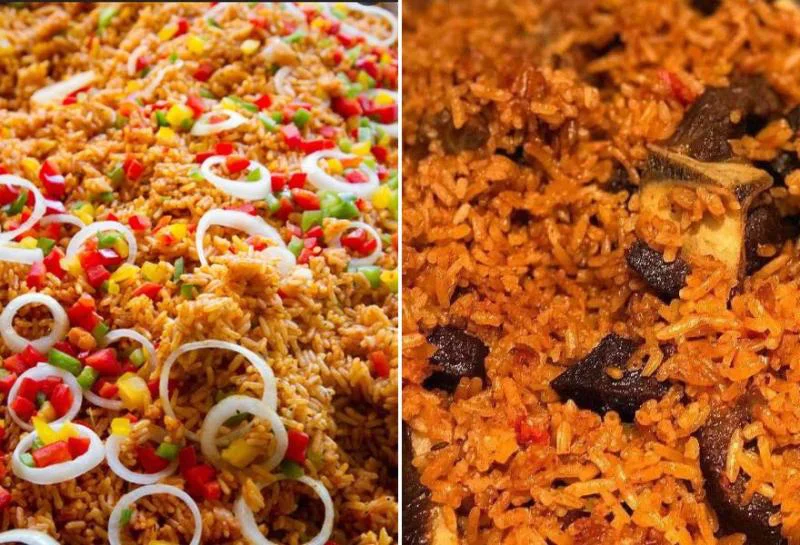At first, it will be beautiful to know the origin of this great African dish. Jollof rice can be traced to Senegal’s ancient Wolof Empire and medieval state in the 1300s, where it first surfaced as a dish called thiéboudienne. And since then, West African foods have become one of the fastest-growing culinary fads, with local superfoods like moringa, fonio, tamarind and teff gaining popularity. This surge in popularity is more than a fad.
So in this article, we will underscore the differences between the Nigerian Jollof and Ghana Jollof. What makes both of them specific and outstanding?
What is Nigerian Jollof?
Jollof rice, generally, is a staple in West African cuisine. Nigerian Jollof is made from parboiled long-grain rice. Nigeria Jollof has a light tomato flavour, but the longer cooking time provides a smoky undertone that mixes with the tomato to give a smoky ashy and roasted tomato flavour. Its smokiness is referred to as party Jollof. Charcoal produces distinct flavour combinations compared to a modern grill, hot coals, or wood. The smoke enhances the rice’s delicious savoury flavour. Nigerian Jollof also contains paprika, a pleasantly fiery and sweet dried and ground red pepper spice that adds to the sweetness and richness of the dish. The Nigerian Jollof also gives off a dazzling red at the end of preparation.
What is Ghanaian Jollof?
Ghanaian Jollof is cooked with basmati rice with fine particle size, a long, slender, thin grain that doesn’t need to be parboiled because of the basmati or Thai Jasmine rice utilized. Basmati rice has a broad surface area for sauce absorption and a high starchy content with an aromatic scent. The Ghanaian Jollof doesn’t need the sauce stress, but rather the preparation of the tomato stew and meat stock required to cook the rice. These and other vital indigenous spices like ginger, onions, and spicy peppers give it flavour and colour. Ghanaian Jollof has a higher tomato taste composition. This is because Ghanaians enjoy tomatoes in various ways, including fresh, ripe, fruity, puree, and cooked. Ghanaian Jollof rice has a distinct burnt flavour, with many preferring the “bottom of the pot.” The burnt taste is caused by the pot’s reaction with the rice, resulting in a brown note that adds an authentic and delicious jollof rice. Ghanaians add meat to the tomato sauce to give the Jollof a hearty, meaty tomato flavour. Ghanaian Jollof is less hot than Nigerian Jollof because it utilizes less bird-eye chilli and scotch bonnet chile.
Difference Between Nigerian Jollof and Ghanaian Jollof
The difference between Nigerian Jollof and Ghanaian Jollof is very slim to identify as they both have a very spicy taste and would almost use the same ingredients to cook. But research has been able to spot the little differences between these two. Firstly, Nigerian Jollof uses long-grain rice, which is hard and provides good flavour absorption, while Ghanaian Jollof uses more aromatic basmati rice, which adds extra flavour to the dish. If cooked as Party Jollof, Nigerian Jollof is most likely to be cooked with firewood to give it a smoky feel, unlike the Ghanaian Jollof, which appears to be less smoky even for parties and celebrations. The natural and significant difference between these two rice recipes is their texture.







